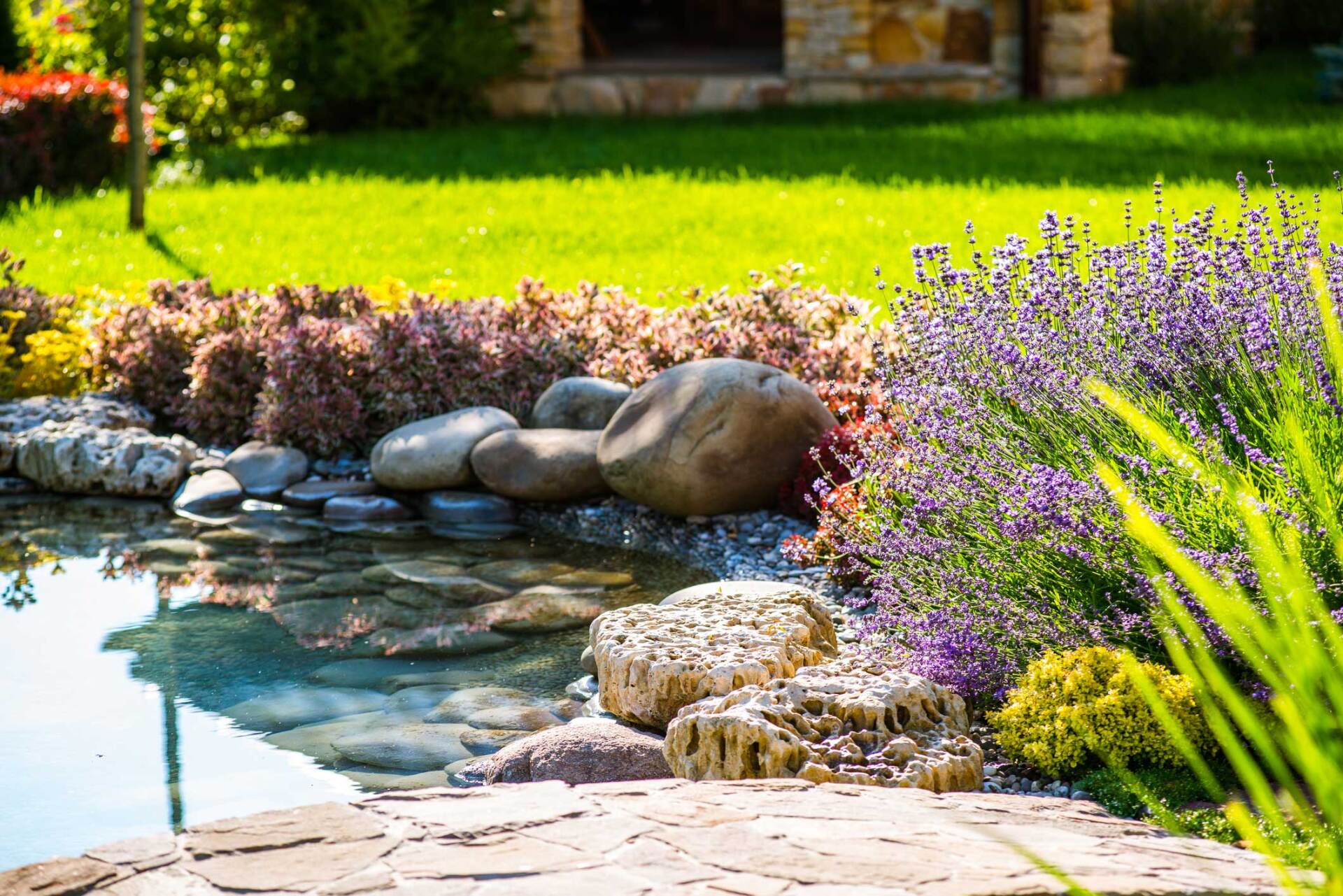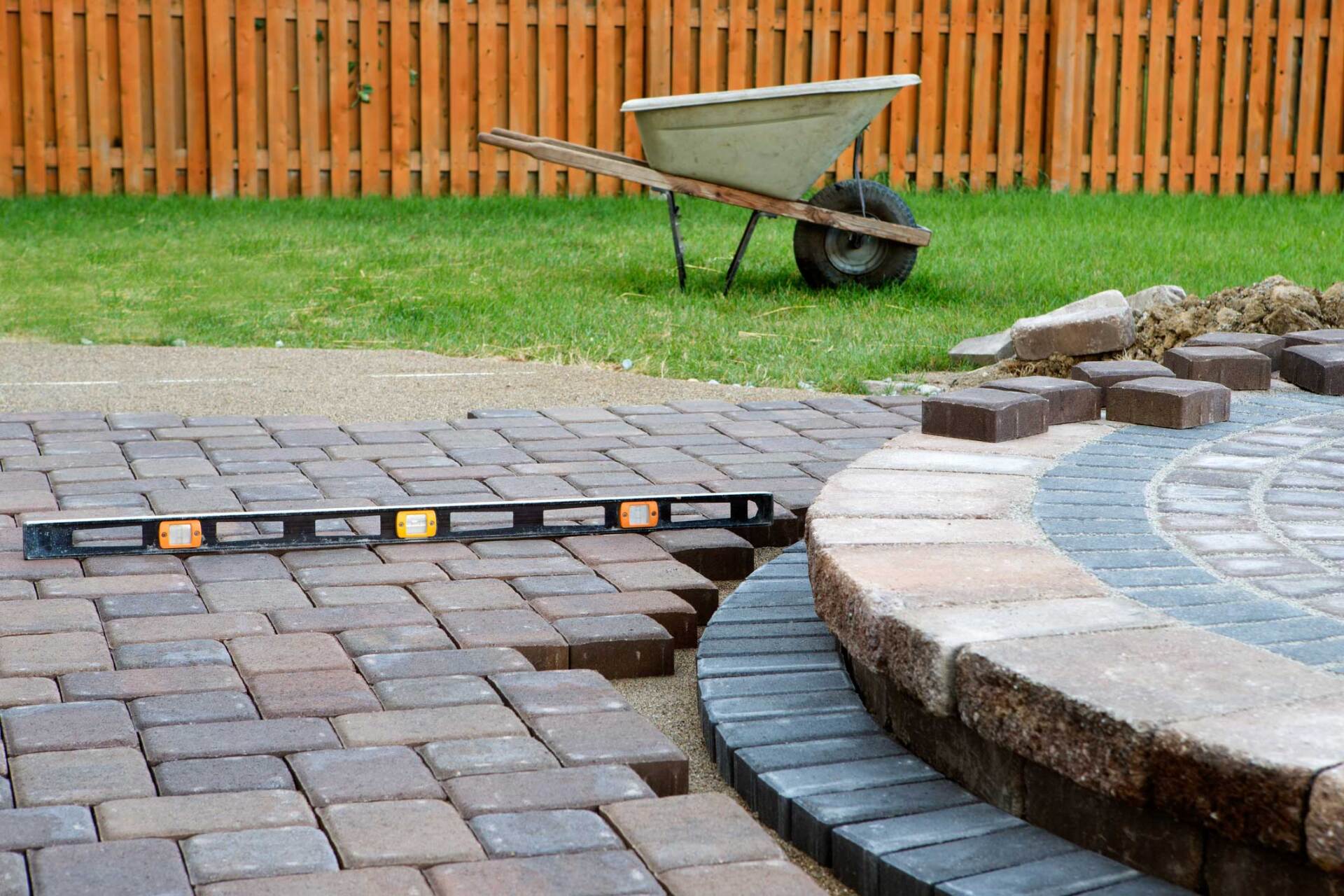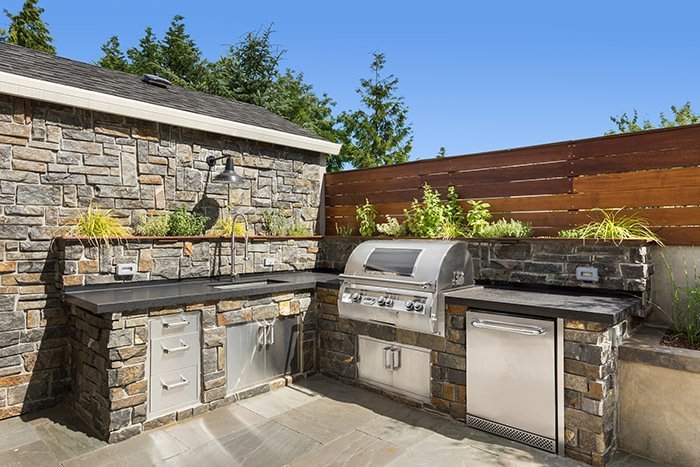STONE LANDSCAPING OPTIONS FOR YOUR PARKING STRIP
The parking strip that lies between the sidewalk and the road is one of the more dreaded areas of landscaping for many homeowners. This strip is there to provide a buffer between the cars parking at the curb and pedestrians on the sidewalk. All too often, it becomes a weedy patch of grass that is difficult to maintain. Paving over it with pavers or stones can solve this dilemma while providing an attractive alternative to grass.
STONE CHOICES
There are three main choices for landscape paving - natural stone, concrete pavers, and bricks. The one you choose is a matter of preference, as all perform equally well.
Natural Stone
Natural stone comes in precut pieces specifically for paving projects. You can find well-honed pieces cut to specific shapes and polished smooth, or you can opt for irregular flagstones with a natural surface. Polished stone looks more formal, while natural stone and flagstones can have a more rustic appearance. Popular stone options include bluestone and cobblestone, but there are many other stone types available.
Bricks and Pavers
Bricks and pavers are very similar. Bricks are made of sand, concrete, and lime, whereas pavers are made from concrete and varying inclusions that vary depending upon the look of the paver. Bricks are typically rectangular, while pavers come in a large range of sizes and shapes. You can also use bricks as a decorative border around the natural stone or concrete pavers.
INSTALLATION METHODS
Grass and weeds growing around the paving can be an issue with paved parking strips. Proper installation prevents weed growth from taking over your strip, while also minimizing maintenance needs.
Base Preparation
Your paving is only as strong as its base. Typically, the strip is excavated and several inches of crushed gravel is laid down and compacted to form the base. The depth varies depending on the soil beneath, with clay soil requiring the most gravel depth. The gravel allows drainage while suppressing weeds. The gravel layer is topped with a few inches of sand that provide the installation bed for the pavers.
Joint Options
Sand joints are the most popular option in stone, brick, or paver parking strips. Paver sand is swept into the joints between the stones and then sealed so the sand doesn't easily wear away. Mortar joints are also a possibility, but these can crack and become unsightly over time. Sand withstands ground settling and heavy use better with less chance of cracking when compared with mortar.
DECORATIVE OPTIONS
Although it's possible to leave the parking strip paved and plain, plants provide more curb appeal. Just keep in mind that room must be left for people parking to open their car doors at the strip.
Planting Wells
One option is to not pave over the entire strip. Instead, leave an opening at regular intervals that reveal the bare soil. Then, plant flowers or small shrubs in each well. Mulch well over any bare soil that remains around the plants, otherwise weeds may take over your planting wells. Silver sage, bearded iris, and creeping sedum are hardy, low maintenance options that can thrive in an exposed parking strip.
Raised Options
If leaving openings in the paving isn't desired, planting on top of the paving provides an alternative. You can use the same or a complimentary stone product to construct small planting boxes in the center of the parking strip. Another option is to purchase large decorative cement pots and place these at intervals along the strip. Remember that pots and raised planters dry more quickly than ground planting, so additional irrigation may be necessary.
Contact The Rock Garden to explore your options for landscaping your parking strip.



















